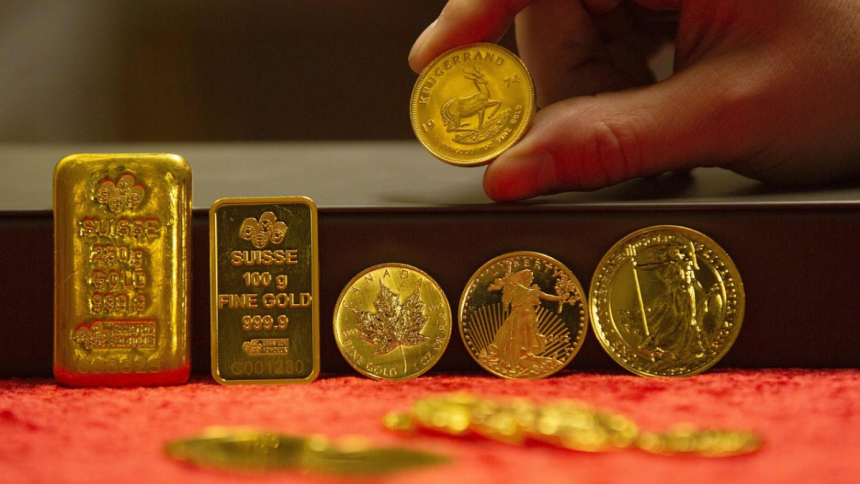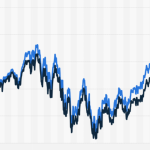In periods of instability, investors seek shelter by selling stock and investing in gold. You may have noticed that the price of 1oz gold bars increases when a country faces political and economic uncertainty. Initially prized for its adaptability and endurance, gold has played an essential role in the growth and stabilization of the global economy and currency markets. It has an intriguing history that explains its persistence in the present investment age.
In chemistry, gold is a noble metal that is corrosion resistant and oxidized; each of the noble metals—silver, gold, and copper—has been used as currency throughout history, but gold gained popularity due to its superior susceptibility to depreciation. The international economy dramatically relies on gold, and many investors feel that price variations might impact the economy.
Let’s learn how it’s done.
Once Gold Was Used as a Substitute for Currencies
As early as the Byzantines, gold was used to support national currencies, that is, those considered legitimate money in their place of origin. Gold was used as the worldwide reserve currency for most of the twentieth century; before President Nixon decided to do away with it in 1971, the United States operated under the gold standard.
Countries could not just continue creating fiat money without backing it with an equal deposit of the gold in quantity. Whereas the gold system has historically been discarded in industrialized nations, few analysts believe it is necessary to reintroduce gold due necessary to reintroduce gold owing to the unpredictability of the US currency and linked currencies.
How Does Gold’s Value Affect the Country That Imports or Exports It?
The worth of a country’s currency is intrinsically linked to the price of its exported and imported goods.
However, any state with more exports than imports tends to have a strong local currency. Thus, a country that when gold rates increase and the country’s overall export value rises, the currency of the country that manufactures gold or has gold reserves is most likely to appreciate. While the worth of gold fluctuates over time, it climbs rather predictably in the long term, exploding during monetary and political instability and plummeting during investor optimism and overconfidence.
Nations that import gold in large amounts, contrary, will always have a devalued currency as gold prices value goes up. Nations that have specialization in manufacturing goods based on gold but have scarcity of resources, for instance, will be large gold importers and hence more susceptible to variations in the prices of gold.
When monetary authorities acquire gold, the availability and demand for local currency are influenced; this can cause prices to rise. It is primarily due to banks’ emphasis on producing more money to buy gold, creating an oversupply of fiat money.
Gold Is Considered to Be the Strength of the Economy
Whenever the economy is doing well, assets apart from gold tend to do well. Stocks in a given sector gain in value, deflecting economic growth off from valuable metals and other non-income-generating commodities.
When the economy suffers, demand for equities and other investment securities falls, causing more money to flow into what are seen to be moretrustworthy investments, such as money and gold.
In 2020, gold mining itself contributed about $40 billion in GDP to countries that operate and run these mines. In some countries, gold is what runs the economy. Since 2010, Ghana’s economy has skyrocketed from $28 billion to $72 billion due to its gold mines, a growth the country has never seen.
Gold Is Used to Hedge off Inflation
When a country’s inflation rate is high, investors often purchase vast quantities of gold. During periods of high inflation, demand for gold grows because of its intrinsic value and limited supply.
Gold holds its value much better than other forms of currency because of its limited availability. Countries may print more money (although not a good idea) but can not print more gold.
Some countries’ central banks still hold a certain amount of gold to ensure their currency remains stable, helping their economy stabilize during international rising prices.
Gold Prices Frequently Determine the Worth of a National Currency
Many people feel that gold is a good proxy for a country’s currency. However, there is a strong connection between gold rates and the worth of fiat money; it is not reverse, as many individuals have a point of view.
Gold rates, for instance, will shoot up if gold has been in great demand in the manufacturing industry. But, so does local currency if the products are exported to other countries.
As a result, while the gold value is frequently used to represent the worth of the US $ or another currency, an examination of the circumstances is required to determine if there is a negative link.
Gold has a significant influence on the profitability of global currencies. There is little question that gold will remain to play an essential role in currency markets.
Lynn Martelli is an editor at Readability. She received her MFA in Creative Writing from Antioch University and has worked as an editor for over 10 years. Lynn has edited a wide variety of books, including fiction, non-fiction, memoirs, and more. In her free time, Lynn enjoys reading, writing, and spending time with her family and friends.















